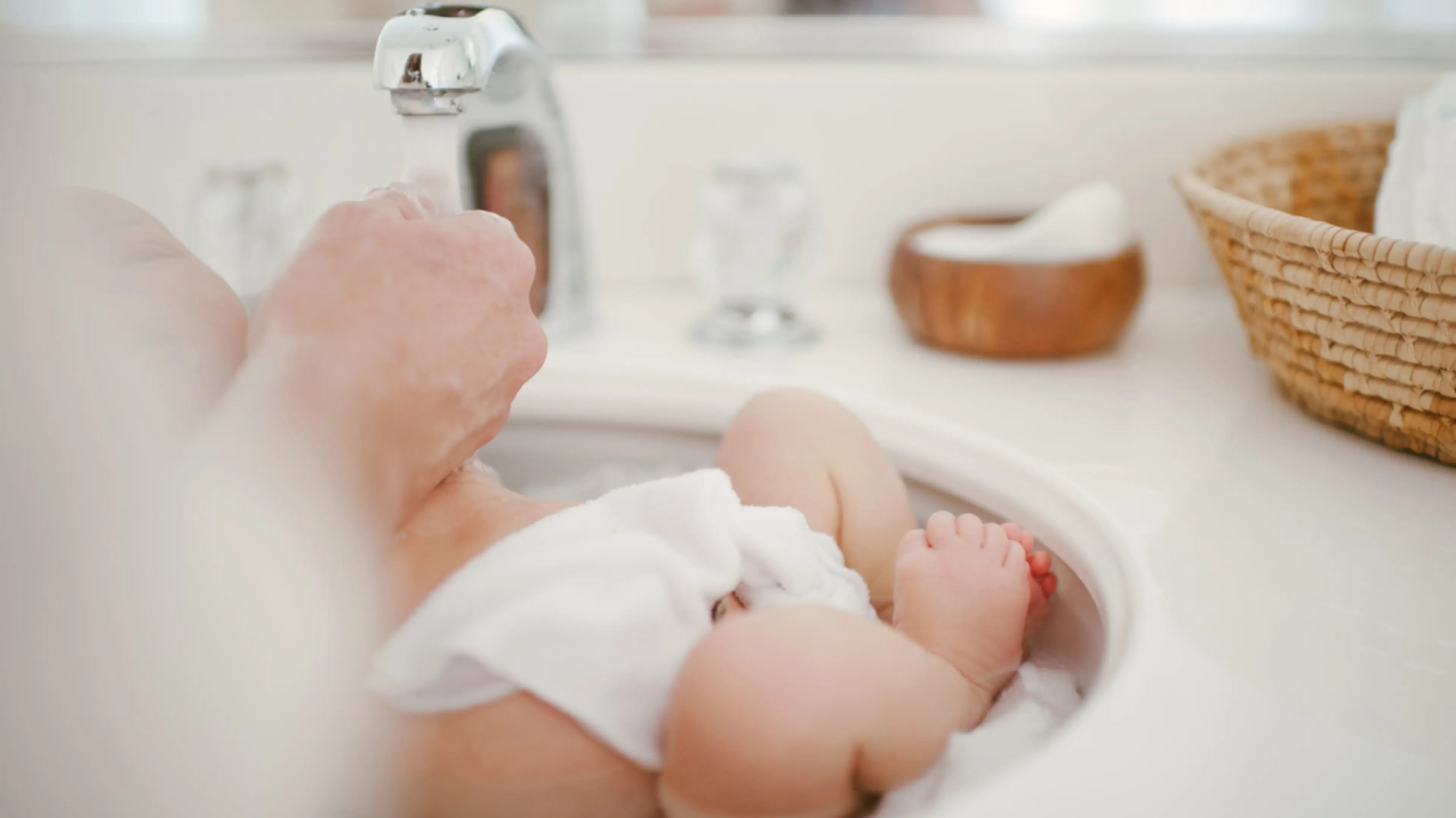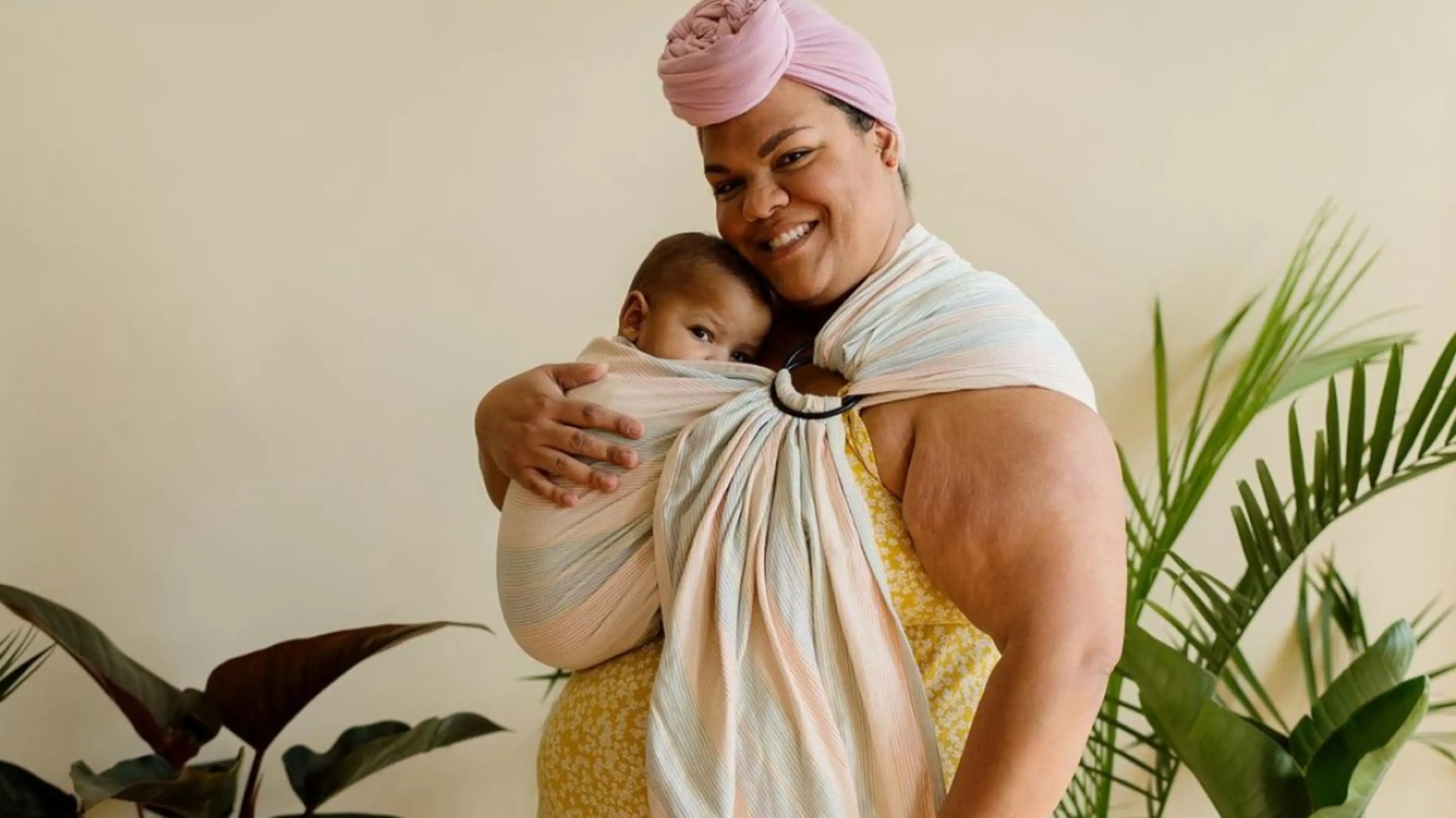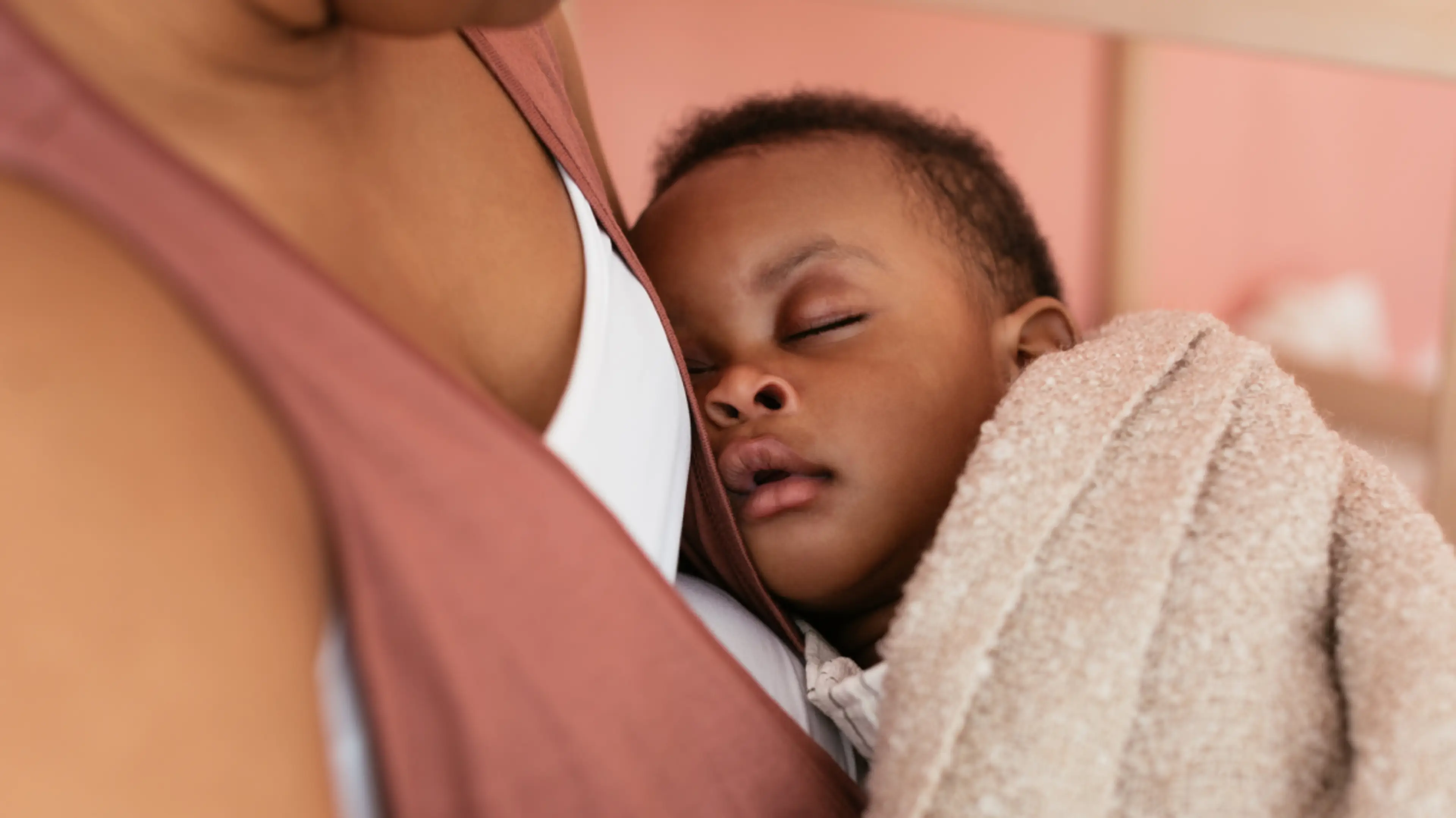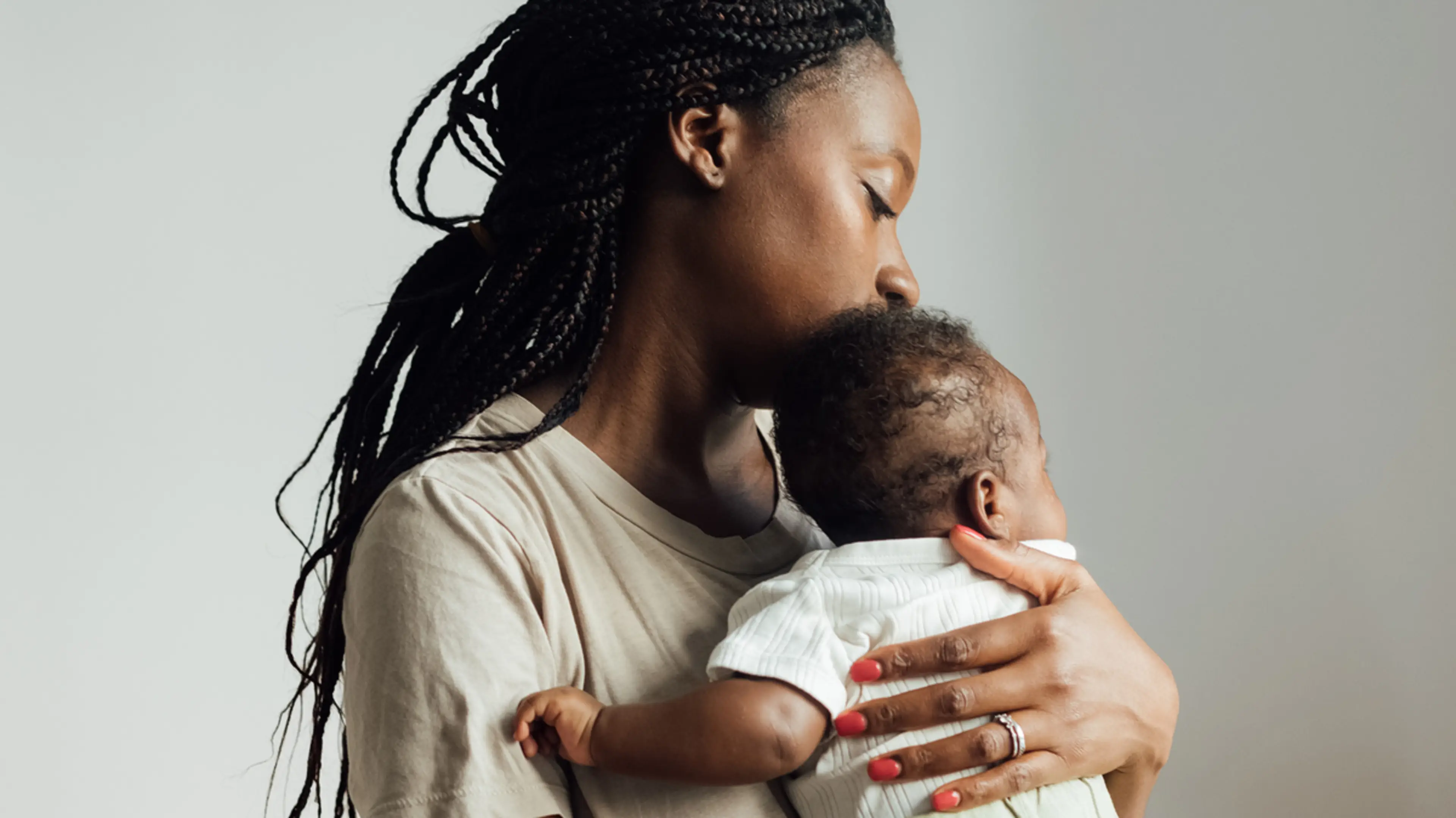TLDR: As simple as a bath sounds, the idea of bathing your newborn can be intimidating. Our guide for bathing your baby includes when and how often to bathe a newborn, along with tips on where to bathe them, the water temperature, and the supplies you need.
When your baby is born, it’s easy to get caught up in a whirlwind of new information. You’re learning how to feed them and when to change their diaper, adjusting to new schedules, and so much more. The last thing on your mind at this moment is probably how often you should bathe a newborn.
Once you get home and start going through the eat, sleep, and change diaper routine, though, you may start to wonder: is my baby clean? Does my baby need a bath every day? How can I bathe them safely? And finally, how often should I actually bathe my baby?
Don’t fret. From soothing to safety, we’ve got you covered with answers to all those questions, plus other useful bath-time tips.
The First Bath
For many years, babies were given a bath within the first few hours of being born. If the baby was born in a hospital, the nurse would come and give them their first bath, either in the nursery or in the recovery room with mom. This recommendation has been changing, though.
Recent research has shown that waiting to bathe a baby until 48 hours1 after birth preserves the body temperature and moisture of the baby’s skin. Dr. Colleen Kraft,2 a pediatrician at Children’s Hospital Los Angeles, explains the benefits of waiting: “Babies are very sensitive to cold in the first 24 hours of life. Baths can lead to a drop in temperature (hypothermia) or blood sugar (hypoglycemia).” Additionally, “Babies are born with a protective substance on their skin called vernix,” she says. “It’s best to leave this on your newborn, as it acts as a natural moisturizer for their delicate skin.”
Most hospitals will give babies their first bath near the 24-hour mark, so if you want to wait a little longer, don’t be afraid to speak up and let the staff know.
Delaying that first bath may also benefit breastfeeding as well, because you and baby may have more skin-to-skin time before the first bath is given. The natural smells between mom and baby are also preserved, encouraging your baby to latch.
Depending on how long you and your baby stay at the hospital, their first bath may be there or at home. If you give your baby their first bath at home, all they’ll need is a light sponge bath.
Before the Umbilical Cord Stump Falls Off
For the first weeks, your baby will still have their umbilical cord stump attached. It usually falls off in one to three weeks, but while it’s still there, it’s essential to keep the area clean and dry so the stump will dry out and fall off.
During this time, stick to sponge baths to avoid submerging the umbilical cord in water. Wipe around the area with a warm cloth, but don’t let the stump get wet. “After that area is healed, [baby] can be placed directly into the bath water,” Dr. Kraft says.
How To Give Your Baby a Sponge Bath
During a sponge bath, you’ll wash your baby all over, just without putting them in a bathtub. Instead, use washcloths to clean them. Here’s how:
First, lay a towel down on the floor, changing table, bed, or counter by the sink—anywhere you feel comfortable laying your baby down for their sponge bath. Some baby bathtubs even come with a mesh sling that fits over the tub, which can also be used for sponge baths.
If you choose a high location, make sure to keep one hand on your baby for the entire bath. Lay them on their back and cover them with another towel to keep them nice and warm.
Next, wash your baby in sections. It’s helpful to have one washcloth with a small amount of baby soap and another washcloth that you just use to rinse. You can use a large bowl of warm water to dip your washcloth so you don’t have to keep adjusting the temperature of the faucet.
Be careful not to get soap in baby’s eyes—you can skip using any soap when you wash their face. Try to use fragrance-free soap to avoid rashes or eczema, and be mindful of your baby’s soft spots3 .
If your baby has hair, use a small amount of baby soap or baby shampoo to gently wash their hair. Once you finish, you can soak the washcloth in water and carefully squeeze the excess water over their hair. The water should only fall over their scalp and not on their face.
Once you‘re finished bathing your baby, make sure they’re fully dry before you put on a fresh diaper and clean, warm clothes.
After the Umbilical Cord Stump Falls Off
Once your baby’s umbilical cord stump falls off, it’s a good idea to stick with the sponge bath for a few more days. This ensures the belly button has dried out sufficiently and healed completely. After their belly button has healed, you can begin regular baby baths.
You can use a portable baby bath or basin. These baths are much like a sponge bath, but the baby can sit in a small amount of water in their tub. It’s still important that you keep your baby warm, which you can do by covering them with a warm, wet, soft cloth. Make sure to check the temperature of the washcloth and switch it out if it gets too cold.
To help keep your baby warm during bath time, wash their body first, and finish with baby’s scalp and hair. You’ll be able to dry and cover their head more quickly than if you wash their hair first.
Safety Tips for Newborn Bath Time
Anytime water is involved with babies, you want to make sure to be extra vigilant and focus on safety. Babies are extremely slippery when they’re wet, so you may find it helpful to have someone else there to assist during bathtime.
Of course, this isn’t always an option when an impromptu bath presents itself. Here are some helpful safety tips when bathing your baby:
Try an infant bathtub
An infant bathtub or sink insert is a great start. These bathtime essentials are made with the safety of your baby in mind!
There are many shapes and sizes when it comes to baby tubs, too—some can grow with your baby while they’re too small to sit in a regular tub, while others fold up so they don’t take up much storage space.
If you use a portable infant bathtub, be mindful of where you put it during bathtime. They’re usually the safest when placed on the ground, so there’s no chance of falling. Ensure whatever surface you use is stable and sturdy.
Check the water temperature
Babies have incredibly sensitive skin and can’t regulate their body temperature in their first few weeks. They can get too cold or too hot in an instant. The recommended bath water temperature is between 98.6℉ to 99.5℉4 to protect babies from getting too cold or too hot. Always test the water temp before putting baby in the bathtub.
An easy and effective way to check the water temperature is with a bath thermometer. If you don’t have a bath thermometer, you can always use your elbow or wrist to check and ensure it’s not too hot or too cold. The water should feel warm.
Not too much water
Your baby doesn’t need a full tub of water. Two or three inches of warm water is sufficient. If the water feels like it’s getting a little cold, you can add more warm water to the tub.
Always have one hand on the baby
Babies can easily slip and slide in a bathtub, even if the tub is specially made for infants. To make sure your baby stays safely in one spot, always keep one hand on them.
Anything you need for bathtime—soap, washcloths, towels—should be within arm’s reach. Never leave your baby in the bath without supervision.
Have a towel ready
When your baby is all clean, you’ll want to make sure to dry them off quickly. Being wet can make a baby feel colder since newborns can’t regulate their temperature. Have a soft, dry towel handy to wrap them up in. Hooded towels are a great option to help keep their head warm along with the rest of their body.
How Often Should You Bathe Your Newborn?
Now that you know how to bathe your baby, how often do they need a bath? The short answer is that infants only need to be bathed one to three times a week. Dr. Kraft advises sticking to this limit, as “too much bathing can dry out your infant’s skin, and your baby rarely gets dirty enough to need more frequent baths.”
Sometimes life happens with a newborn—an especially dirty diaper or excessive spit-up, for example—and you may need to add in an extra bath to clean the mess. Wondering at what point you can start to bathe the baby more often? “When your infant is old enough to crawl or walk or when they start eating solids, it may be time to start bathing every other day,” Dr. Kraft advises.
The Best Time of Day for a Bath
There’s no “right time” to bathe your baby. Some parents prefer bathing their baby in the morning when they’re alert and happy, and some use baths as a calming part of a bedtime routine. Whatever works for you and your baby is the best time of the day.
When you choose a time to bathe your baby, make sure you’re not distracted or rushing the routine. Bathtime should be a relaxing experience for your baby. You can also use this time as a bonding experience.
What Happens Between Baths?
You may be wondering if cleaning your baby as little as once a week is sufficient. We get it. But keep in mind that every time you wipe and change your baby into a clean diaper, they’re getting clean. Most likely, you’re wiping their hands and face during the day, too, after they eat or if they get saliva or spit up on them. These little mini-cleanings throughout the week are all your baby needs to stay clean between baths.
Happy bathing!










